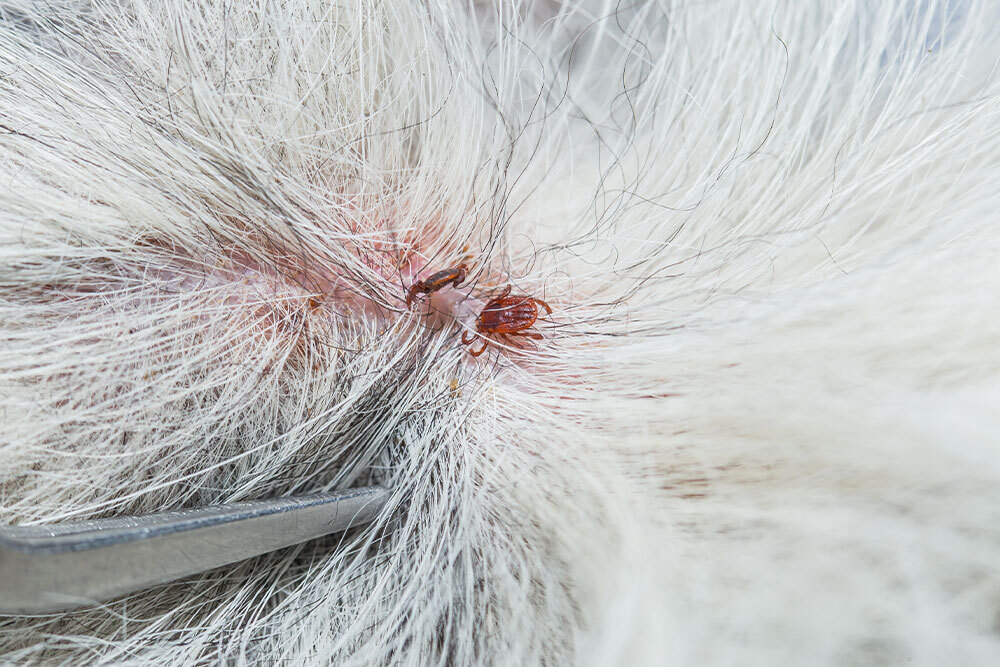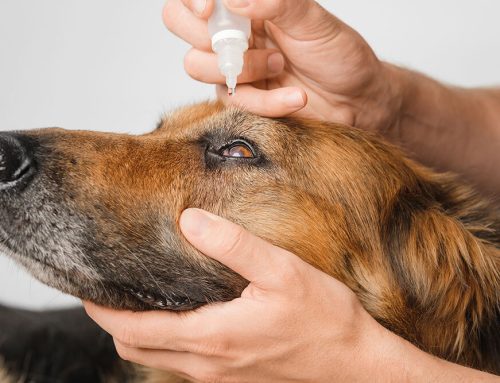Scratching the Surface: Identifying and Treating Flea Allergies
Few things tug at your heart more than seeing your pet constantly scratching, chewing, or licking themselves raw. At Stanton Pet Hospital, we talk to pet owners every day who feel helpless watching their dog or cat clearly suffer—and not knowing why. Often, the culprit isn’t something dramatic. It’s something tiny: a flea. More specifically, it’s an allergic reaction to a flea bite, known as flea allergy dermatitis (FAD).
This condition is surprisingly common, deceptively severe, and, with the right approach, completely manageable.
What’s Actually Causing the Itch?
It’s easy to assume that fleas cause itching just by crawling around or biting. But with FAD, the problem runs deeper. Pets with this condition are allergic to flea saliva, and even a single bite can trigger a reaction that leaves them intensely itchy for days.
You might never even see a flea. And yet your pet might be biting themselves raw, especially near the tail, belly, or legs. According to the Merck Veterinary Manual, this hypersensitivity reaction can develop at any age—and once it starts, it tends to worsen over time if untreated.
What Does Flea Allergy Dermatitis Look Like?
If you’ve noticed your pet scratching persistently, biting at their skin, or losing patches of fur—especially along the back end—it might be FAD. For cats, you might see tiny scabs (what’s called “miliary dermatitis”) across the skin. For dogs, the skin may look red, warm, or even infected. Cornell University’s Feline Health Center offers more insights into how these reactions can present in cats specifically.
Often, these symptoms are more severe than you’d expect from a “normal” flea problem. That’s because for pets with FAD, it’s not about how many fleas they have—it’s about how their immune system is reacting to them.
Why Timing Matters
The longer your pet stays caught in the “itch-scratch” cycle, the harder it is to break. Open wounds can lead to secondary infections, skin thickening, and even long-term changes in behavior—from restlessness to withdrawal.
And the fleas themselves? They’re incredibly persistent. Even if your pet rarely goes outdoors, fleas can hitch a ride on shoes, pants, or other animals. That’s why year-round prevention is so strongly recommended by experts.
How We Diagnose and Treat FAD
When you bring your pet in, we start with a full exam. We’re looking for the obvious signs—redness, hair loss, scabbing—and also for the subtler ones, like flea dirt (the black specks that indicate flea droppings). If your pet’s case is severe or unclear, we may recommend allergy testing to rule out other contributors like food or environmental sensitivities. The AKC offers a helpful overview of common dog allergy symptoms, which can sometimes overlap with FAD.
From there, we develop a personalized treatment plan. That usually includes:
- Flea control, using topical or oral medications tailored to your pet’s needs.
- Skin relief, which might include steroids for quick comfort or longer-term medications like antihistamines or cyclosporine.
- Infection management, if we’re seeing signs of bacteria or fungus taking advantage of broken skin.
- And sometimes, supportive care—things like omega-3s, medicated baths, or even a cone to keep your pet from causing more trauma while they heal.
We also talk through what you’re doing at home. Which products have you used? How often are you grooming? The ASPCA emphasizes the importance of regular grooming in spotting skin issues early and supporting overall skin health.
Keeping It From Coming Back
Preventing flea allergy dermatitis is often easier than treating a full-blown flare-up. That’s why we emphasize routine prevention—and not just in the summer. As Purdue Veterinary Hospital notes, fleas can thrive indoors, especially with central heating.
We’ll help you select a flea prevention product that fits your pet’s age, lifestyle, and any existing health concerns. We’ll also talk through how to manage your home—vacuuming carpets, washing bedding, and treating other pets who might not be showing symptoms.
What You Can Do at Home
There are a few simple things that make a big difference:
- Monitor your pet’s skin regularly—especially after outdoor play.
- Keep track of scratching, licking, or changes in behavior.
- Use your phone to snap photos of any skin changes, so we can see the progression.
- Stick with prescribed treatments—even if symptoms improve quickly. Flea cycles take time to fully interrupt.
And remember: if something doesn’t seem right, reach out. Skin issues are uncomfortable, frustrating, and sometimes confusing—but they’re also incredibly treatable when caught early.
We’re Here to Help
At Stanton Pet Hospital, we’ve seen hundreds of cases of flea allergy dermatitis. And every pet is a little different. That’s why we take the time to listen, to examine thoroughly, and to build a treatment and prevention plan that’s right for your animal—not just what works “on paper.”
If your pet has been itching more than usual, don’t wait. Schedule an appointment, get in touch with our team, or meet our staff to learn how we can help. Relief is possible—and we’re here to help you find it.







Leave A Comment